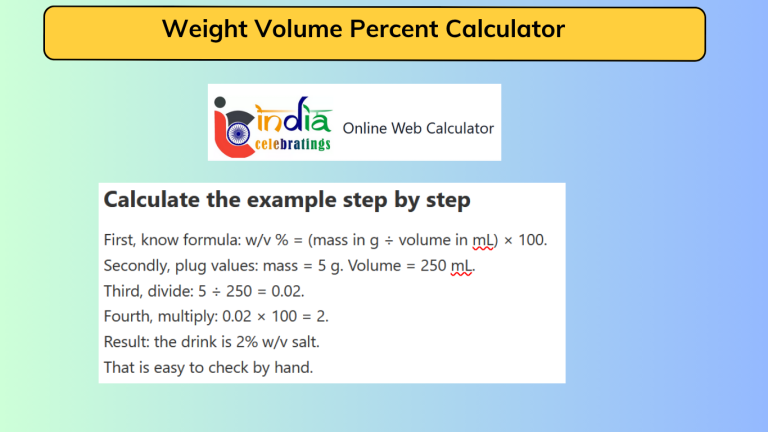Volumetric Weight Calculator
What is a Volumetric Weight Calculation?
Imagine you’re shipping a big but light box—say pillows or soft toys. The “volumetric weight calculator” is a handy tool that turns the box’s size into a weight equivalent, so you know how much you’ll be charged for shipping.
It helps you gauge whether the actual weight or the volume-based weight causes the cost. Carriers use this because bulky items take lots of space even if they’re light.
When to Calculate Volumetric Weight
Let’s say you are an engineer teaching a team in a workshop. You pick up a parcel that is 100 cm long, 50 cm wide, 50 cm high, and its scale weight shows 5 kg. You ask your team: “Should we pay based on 5 kg only?” Not quite. Because the parcel is large, the carrier might charge using volumetric weight instead.
You measure and calculate to see when volume-based weight becomes higher than the real weight. Doing that step ensures you don’t get surprised by shipping costs. In this real-life example the box is light but big, so you calculate volumetric weight and compare it to 5 kg.
How to Calculate the Values Step by Step
- Know the formula: Multiply length × width × height (in cm) then divide by the divisor (commonly 5000) to get volumetric weight in kg.
- Plug in the example: Length = 100 cm, Width = 50 cm, Height = 50 cm.
- 100 × 50 × 50 = 250,000 cm³
- Divide by divisor: 250,000 ÷ 5000 = 50 kg.
- Compare: Actual weight = 5 kg; volumetric weight = 50 kg.
- Decide chargeable weight: Use the higher value → 50 kg in this case.
Thus, the parcel pays as if it weighs 50 kg because the size takes much space.
FAQs
Q1: What’s the difference between actual weight and volumetric weight?
Actual weight is how heavy the package is on a scale. Volumetric weight is how heavy it would be based on its volume. Carriers bill by the higher of the two.
Q2: Do all carriers use the same divisor?
No, different carriers and shipping modes use different divisors (5000, 6000, etc.). Always check the specific one used.
Q3: Why does size matter so much for shipping cost?
Because a large but light item occupies more space on vehicles or aircraft, and space is at a premium. The volumetric weight accounts for that.
Quick trick: Measure each side, multiply them, divide by 5000 (or your carrier’s divisor), and compare with actual weight. Whichever is bigger becomes the billable weight. That’s why using a volumetric weight calculator matters—it makes you aware, avoids surprises, and helps you pack wisely. Ultimately, it saves you cost and time. Hence, always check volumetric weight carefully before shipping—additionally.



